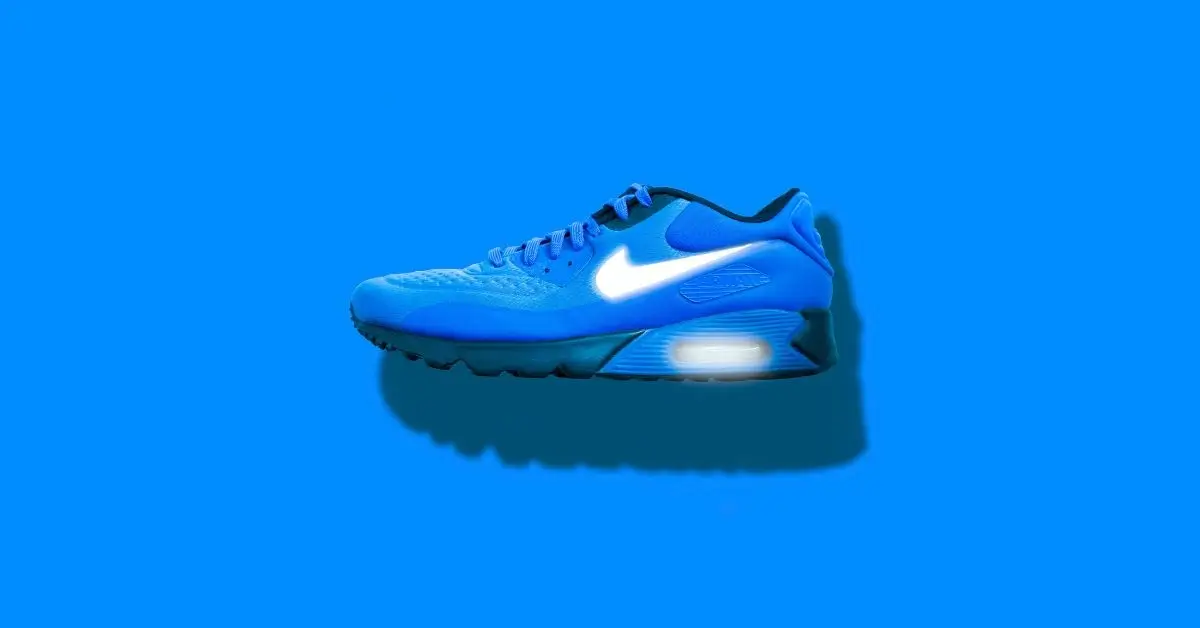Are your insoles appearing worn out? Are you bothered by a persistent odor that doesn’t go away? It’s time to discover the proper way to clean your insoles! Maintaining clean insoles is crucial for hygiene, and it can also extend their longevity and maintain a pleasant fragrance in your shoes.
Fortunately, washing your insoles is a simple process that can be done at home with a few basic supplies. Depending on the material of your insoles, there are different methods you can use to ensure they are adequately cleaned without causing any damage. In this article, we’ll cover some of the best ways to clean different insoles, including foam, gel, and leather. So, grab your cleaning supplies, and let’s refresh those insoles!
Why You Should Clean Insoles:
Health
Dirty insoles can harbor bacteria and germs that can cause health problems. For example, an athlete’s foot is a common fungal infection that can thrive in warm and moist environments, such as dirty insoles. By cleaning your insoles regularly, you can reduce the risk of developing foot infections and other health problems.
Shoe Care
Cleaning your insoles is also essential for shoe care. Dirty insoles can cause bad smells and damage your shoes. Over time, the dirt and grime can build up and cause your shoes to deteriorate faster. By cleaning your insoles regularly, you can extend the life of your shoes and keep them looking and smelling great.
Bad Smell
One of the most common problems with dirty insoles is bad smells. When your feet sweat, the moisture can get trapped in your shoes and insoles, providing an ideal environment for bacteria to grow. This can cause your shoes and insoles to emit an unpleasant odor. By cleaning your insoles regularly, you can eliminate bad smells and keep your shoes smelling fresh.
What Type of Insoles Do You Have?

Leather Insoles
Leather insoles are commonly found in dress shoes and are usually thin and smooth. They are easy to identify by their texture and appearance. Leather insoles require special care when cleaning, as they can be damaged by water and harsh chemicals.
Removable Insoles
Removable insoles are designed to be taken out of the shoe and can be washed separately. They are commonly found in athletic shoes and can be made of various materials such as foam or gel. These insoles can be identified by their ability to be removed from the shoe.
Non-Removable Insoles
Non-removable or glued-in insoles are permanently attached to the shoe and cannot be removed. They can be made of various materials such as foam or leather. These insoles can be identified by their inability to be removed from the shoe.
Shoe Insoles
Shoe insoles, or footbeds, are designed to provide extra cushioning and support. They can be found in various shoes such as sandals and boots. These insoles can be identified by their location inside the shoe.
Removable Shoe Insoles
Removable shoe insoles are designed to be taken out of the shoe and can be washed separately. They are commonly found in athletic shoes and can be made of various materials such as foam or gel. These insoles can be identified by their ability to be removed from the shoe.
Suede Shoes
Suede shoes require special care when cleaning, as they can be easily damaged by water and harsh chemicals. It is important to use a suede brush to remove any dirt or stains from the shoes gently. Avoid using water or any liquid cleaner on suede shoes.
Leather Shoes
Leather shoes require special care when cleaning, as they can be easily damaged by water and harsh chemicals. Using a leather cleaner and conditioner to clean and protect the shoes is important. Avoid using water or any liquid cleaner on leather shoes.
Gathering Necessary Cleaning Materials
So, you want to know how to wash insoles? Great news! It’s a simple process that can help extend the life of your shoes and keep your feet feeling fresh. But you’ll need to gather some necessary cleaning materials before you start.
Here are some essential items you may need to clean your insoles:
- Warm water: Warm water is a must-have for cleaning insoles. It helps to loosen dirt and grime, making it easier to remove.
- Soap or detergent: You can use mild soap or detergent to clean your insoles. Avoid using harsh chemicals that can damage the material.
- White vinegar: White vinegar is a natural cleaning agent that can help to remove odors and disinfect your insoles.
- Baking soda: Baking soda is another natural cleaning agent that can help to neutralize odors and remove stains.
- Rubbing alcohol: Rubbing alcohol can disinfect your insoles and kill bacteria.
- Spray bottle: A spray bottle can apply cleaning solutions to your insoles.
- A toothbrush or stiff-bristled brush: A toothbrush or stiff-bristled brush can scrub away dirt and stains.
- Dry cloth: A dry cloth can wipe away excess moisture after cleaning.
- Leather conditioner: If you have leather insoles, you may need a leather conditioner to keep them soft and supple.
- Saddle soap: Saddle soap is a type of soap that is specifically designed for cleaning leather.
- Shoe brush or suede brush: A shoe brush or suede brush can remove dirt and stains from your insoles.
- Pencil eraser: A pencil eraser can remove scuff marks from your insoles.
Preparation for Cleaning Insoles
Before you start cleaning your insoles, it is important to prepare them properly. This will help you remove stains, dirt, and grime more effectively and thoroughly clean your insoles.
Here are some steps to follow:
First, remove the insoles from your shoes. This will allow you to clean them and prevent shoe damage thoroughly. If your insoles are glued to your shoes, be careful not to damage them when removing them.
Next, remove any loose dirt, debris, or dust from the insoles. Gently tap them against a hard surface or use a soft-bristled brush. This will help you eliminate any loose particles stuck to the insoles.
If your insoles have stains, you can pre-treat them before washing them. You can use a stain remover or a mixture of water and vinegar to remove stains. Simply apply the solution to the color and let it sit for a few minutes before washing.
Once you have removed any loose dirt and stains, you can wash the insoles. Depending on the material of your insoles, you can use different cleaning methods. For example, you can use warm water and soap to clean fabric or leather insoles, or rubbing alcohol to disinfect foam or rubber insoles.
How to Wash Insoles: Our Easy Step-by-Step Cleaning Process
Step 1: Remove the insoles from your shoes
The first step in cleaning your shoe insoles is to remove them from your shoes. This will make it easier to clean them thoroughly and ensure that you don’t damage your shoes in the process.
Step 2: Scrub the insoles with a soft brush
Once you’ve removed the insoles from your shoes, it’s time to start scrubbing them with a soft brush. This will help to remove any dirt or grime that has built up on the surface of the insoles. Be sure to scrub gently so that you don’t damage the insoles.
Step 3: Rinse the insoles with warm water
After you’ve finished scrubbing the insoles, it’s time to rinse them with warm water. This will help to remove any remaining dirt or grime and prepare the insoles for the next step in the cleaning process.
Step 4: Disinfect the insoles with rubbing alcohol
To disinfect the insoles and kill any bacteria present, mix equal parts rubbing alcohol and water in a small spray bottle. Spray the mixture onto the insoles and allow them to air dry completely before returning them to your shoes.
Step 5: Hand wash the insoles with mild soap
If your insoles are still dirty or smelly after disinfecting them, you can hand wash them with mild soap. Fill a basin or sink with warm water and add a small amount of mild soap. Gently scrub the insoles with a soft brush, then rinse them thoroughly with warm water.
Step 6: Air dry the insoles completely
Once you’ve finished washing the insoles, it’s important to let them air dry completely before putting them back into your shoes. Avoid using heat sources to dry the insoles, which can damage and affect their shape.
Drying and Deodorizing the Insoles
After washing your insoles, it’s essential to dry them properly to prevent any damage or mold growth. Here are some tips on how to dry and deodorize your insoles.
Air Dry
The best way to dry your insoles is to let them air dry overnight. This allows them to dry naturally without being exposed to any heat that could damage the materials. Simply remove the insoles from your shoes and place them in a well-ventilated area. You can prop them against a wall or place them on a drying rack.
Dryer Sheets
You can use dryer sheets if you’re in a hurry and need to dry your insoles quickly. Simply place a dryer sheet in each shoe and insert the insoles. The dryer sheet will absorb any moisture and leave your insoles smelling fresh.
Maintain Cleanliness
To maintain the cleanliness of your insoles, make sure to wear clean socks every day. This will prevent dirt or sweat from getting trapped in the insoles and causing odors. You can also use a steam cleaner to sanitize your insoles and kill any bacteria.
Activated Charcoal
Activated charcoal is a natural deodorizer that can help neutralize odors in your insoles. Simply place a few pieces of activated charcoal in a pouch or cloth bag and insert it into your shoes. Leave it overnight and the charcoal will absorb any odors.
Essential Oils
Another natural way to deodorize your insoles is to use essential oils. Add a few drops of your favorite essential oil to a cloth and place them in your shoes overnight. The essential oil will neutralize any odors and leave your insoles smelling fresh.
Cold Water
When washing your insoles, make sure to use cold water. Hot water can damage the materials and cause them to shrink or warp. Cold water is gentle and will clean your insoles without causing any damage.
Special Tips for Leather and Suede Insoles

First, it’s important to note that leather and suede require different cleaning methods. Leather insoles can be cleaned with a damp cloth and a mild soap, but be sure to avoid getting them too wet, as this can cause the leather to warp or crack. After cleaning, apply a leather conditioner to keep the insoles soft and supple.
Suede insoles, on the other hand, require a bit more care. You should never get suede too wet, as this can cause permanent damage to the material. Instead, use a suede brush to remove any dirt or stains from the surface gently. If there are any stubborn stains, you can try using a suede eraser or cornstarch to absorb the stain.
To maintain the quality of your leather and suede insoles, it’s important to store them properly. Keep them in a cool, dry place away from direct sunlight and heat sources. You can also use shoe trees or inserts to help maintain the shape of the insoles and prevent them from becoming misshapen over time.
Alternative Cleaning Methods
Plastic Bag Method
One way to clean your insoles is to use a plastic bag. Simply put your insoles in a plastic bag and add some baking soda or cat litter. Shake the bag well and let it sit for a few hours. The baking soda or cat litter will absorb any odors and moisture. After a few hours, remove the insoles from the bag and shake off any excess baking soda or cat litter.
Bleach Method
You can use bleach if your insoles are white and you want to whiten them. Mix one part bleach with four parts water in a basin. Soak your insoles in the solution for 10-15 minutes. Make sure to wear gloves when handling bleach. After soaking, rinse your insoles thoroughly with water and let them air dry.
Washing Machine Method
You can wash them in the washing machine if you have removable insoles. Put your insoles in a mesh laundry bag and add some mild detergent. Wash them on a gentle cycle with cold water. After washing, let them air dry.
Basin Method
You can wash your insoles in a basin if you don’t have a washing machine. Fill a basin with warm water and add some mild detergent. Put your insoles in the basin and use a soft brush to scrub them gently. Rinse them thoroughly with water and let them air dry.
These alternative cleaning methods can be helpful if you want to try something different or don’t have access to a washing machine or basin. Just follow the instructions carefully and avoid using harsh chemicals that can damage your insoles.
Maintaining Insole Cleanliness
Keeping your insoles clean ensures a comfortable and healthy experience while wearing your shoes. Dirty insoles can cause foul odors, infections, and discomfort. Therefore, knowing how to wash insoles is crucial to maintain their cleanliness, durability, and efficiency.
To start, you should replace old insoles regularly. Over time, insoles can wear out, lose their shape, and become less effective at providing support and cushioning. Therefore, replacing them every six months or so is recommended, depending on your usage and foot condition.
Another way to maintain insole cleanliness is by using shoe spray. Shoe spray is an antimicrobial solution that kills bacteria and fungi that cause bad odors and infections. You can spray it directly on your insoles and let them dry before wearing your shoes. Shoe spray is handy if you have smelly shoe insoles or if you use your shoes frequently.
When it comes to cleaning methods, there are several options you can choose from. One popular method is using soap and warm water. To do this, fill a sink or basin with warm water and add a few drops of liquid detergent or hand soap. Then, soak your insoles in the solution for a few minutes and scrub them gently with a soft brush. Rinse them thoroughly with clean water and let them air dry.
Another cleaning method is using baking soda. Baking soda is a natural deodorizer that can help eliminate bad odors from your insoles. To use it, sprinkle some baking soda on your insoles and let it sit for a few hours or overnight. Then, shake off the excess powder and wipe your insoles with a damp cloth.
In addition to cleaning your insoles, you should also take care of your shoes. Remember to wipe them clean and dry after each use, especially if sweating or walking in wet conditions. Use shoe spray or powder to keep them fresh and dry.
FAQ:

Can you put insoles in the washing machine?
It depends on the materials used in the insoles. Still, generally, putting them in the washing machine is not recommended as they may contain rubber or leather that could be damaged by the heat and agitating motion.
How do you get the smell out of an insole?
To get the smell out of an insole, try washing it on cold with a bit of pretreatment and scrubbing with an old toothbrush, then air-drying it. Alternatively, you can use baking soda or isopropyl alcohol to deodorize the insoles.
How do you clean sole shoe inserts?
To clean sole shoe inserts, first remove them from the shoes. Then, scrub them with a toothbrush and a mixture of warm water and mild soap. Rinse them thoroughly and let them air dry completely before putting them back in the shoes.
How long does it take insole to dry?
The time it takes for an insole to dry depends on the materials used and the humidity of the environment. Generally, insoles can take a few hours to a full day to dry completely.
If you liked this blog article about the topic: How to Wash Insoles, don’t forget to leave us a comment down below to tell us about your experience.


